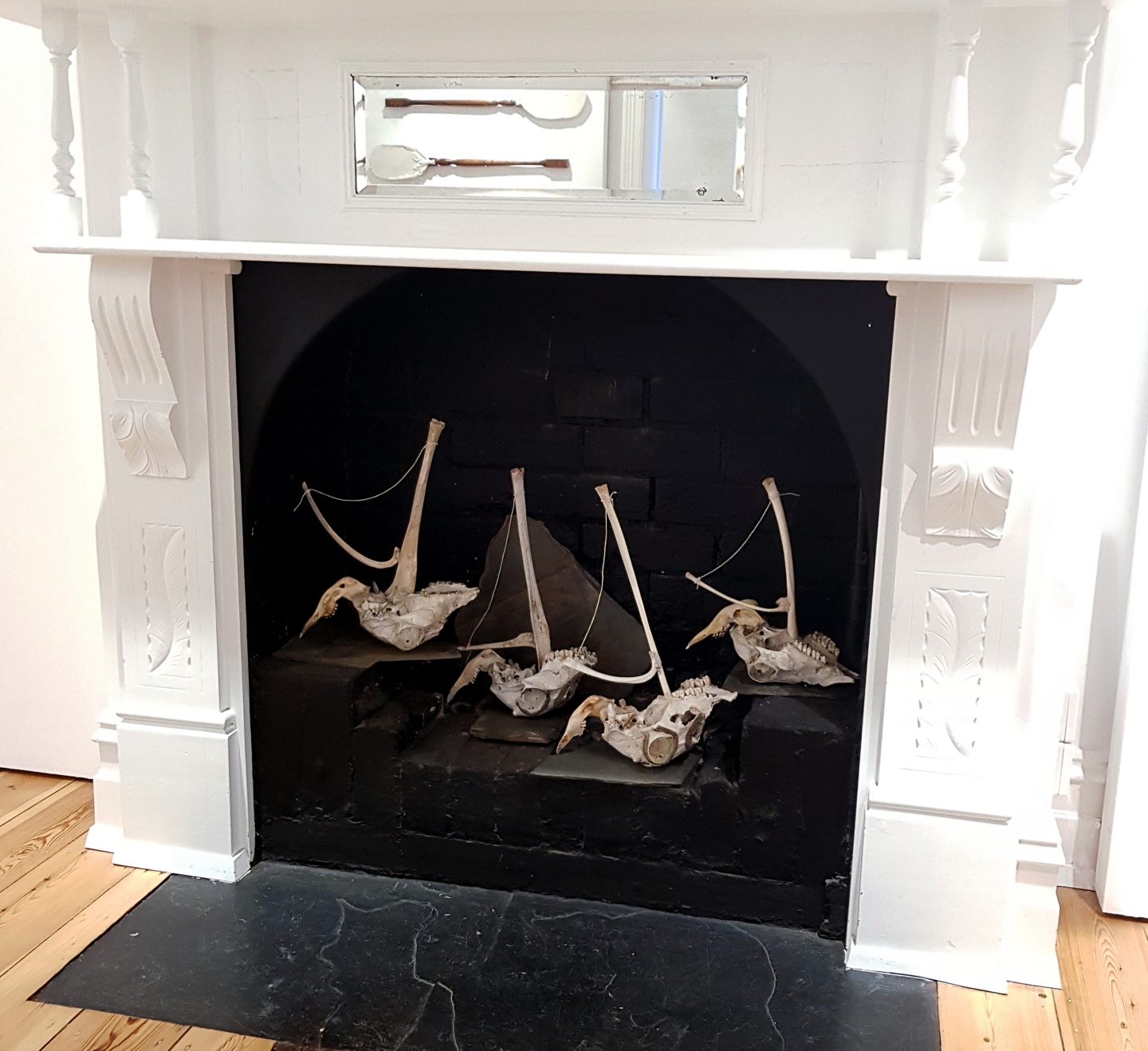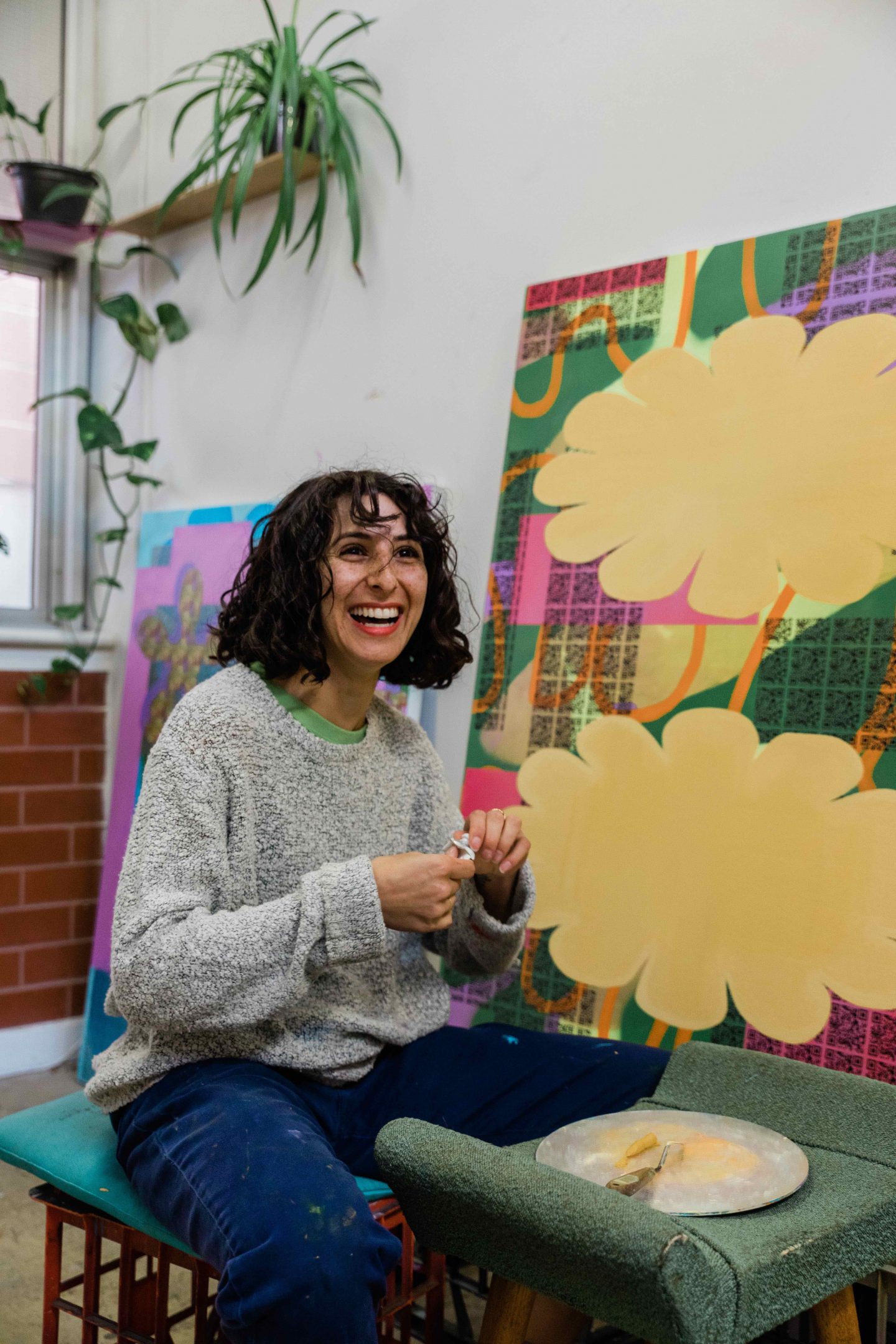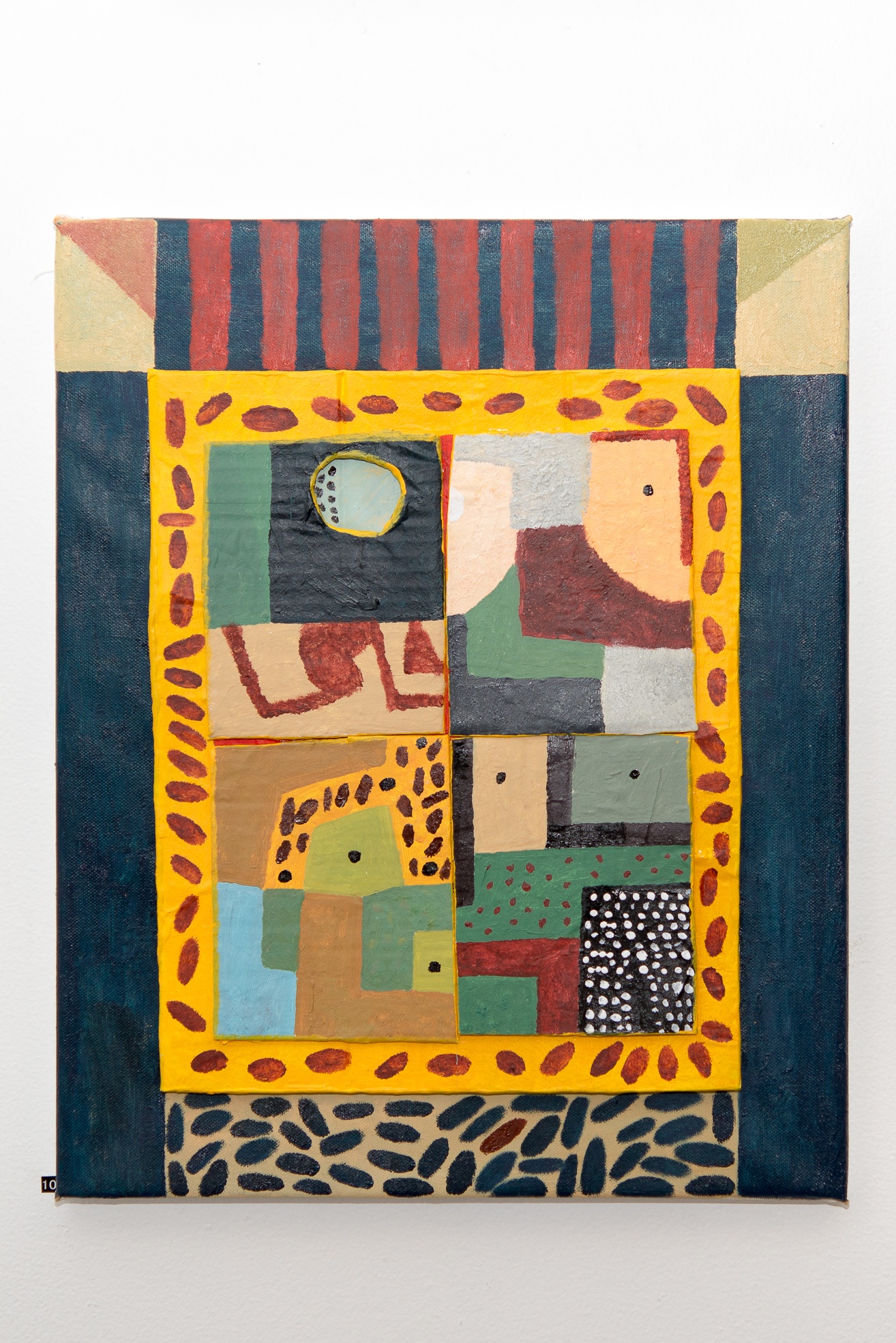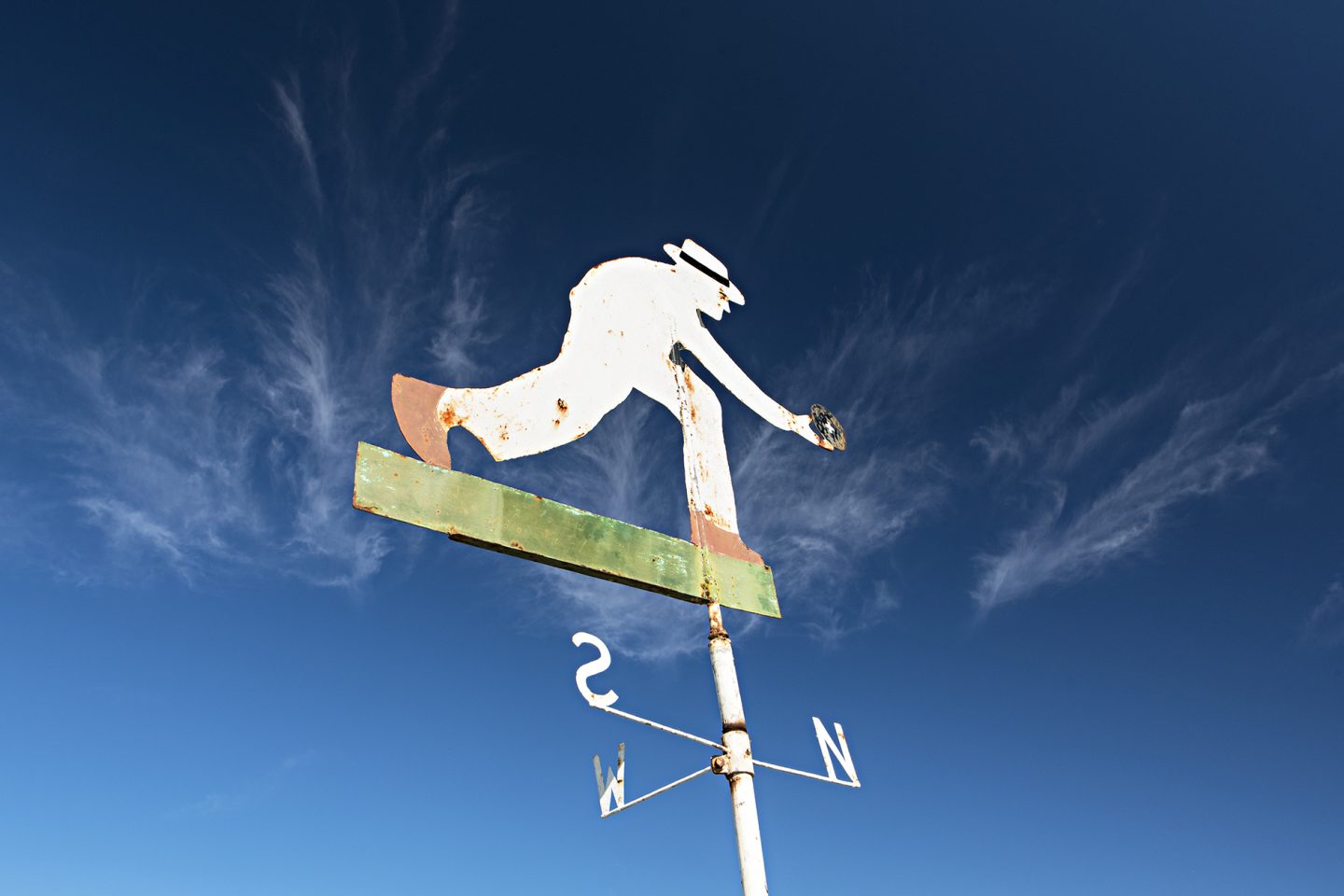Sue Kneebone: Unmoored Memories
Sauerbier House
19 December – 25 January
Sauebier House is one of those remarkable places that have been pulled back from the brink of oblivion to act as a worm hole through which the past and present can still speak to each other. Derelict for much of its latter years, this elegant building, immediately south of Pt Noarlunga has had a very generous dose of TLC and come up beaming. Today it acts as an arts hub for a diversity of projects, many of them drawing on the site and its links with colonial and Indigenous histories. As such it continues to attract a particular kind of art practice – one that is intent on exploring psychological topographies as well as history as a palimpsest of experiences. This art invites reflection and the viewer to join a lot of dots. The artist Sue Kneebone has spent time recently, doing just that. Of her current exhibition, Unmoored Memories, the artist says that the works “represent my felt and imaginative responses to fluid social memories of the Noarlunga coastline and Onkaparinga River.
 Sue Kneebone, Smugglers’ Cave, 2019, fireplace, sheep skulls, bones, slate and string
Sue Kneebone, Smugglers’ Cave, 2019, fireplace, sheep skulls, bones, slate and string
By drawing on anecdotal knowledge gathered from historical accounts, archival maps, early photographs and newspaper records, I have explored points of change in time and place along the Onkaparinga River between Port Noarlunga and (Old) Noarlunga. My inquiry has included social memories of Sauerbier House, a spectral presence in this changing landscape, located at a site where produce and goods were once unloaded from the river for transport to waiting ships moored to a long chain off the coast.”
The artist’s fieldwork involved delving into historical records, charts and maps of the area as well as walking the land, observing coastal topographies, jetties and wharves. In the process Kneebone reflected on her own family, colonial history and its intersection with Kaurna culture and country. The works she has fashioned from materials sourced from the area, are hybrid forms which symbolize for her, conflict, accommodations, and the formation of new stories and identities. These works are not seamless, airtight resolutions but deliberately awkward, concurrences of fragments that remind all of us that our personal histories and sense of identity are cobbled together contraptions – but they are all we have.
Open Studio
ACE Open
24 January -15 February
ACE Open is opening its 2020 programme with a group exhibition showcasing new and recent work by its five current studio artists, Tamara Baillie, Max Callaghan, Steven Cybulka, Tara Rowhani-Farid & Jess Taylor.Each year, ACE Open hosts five fully supported South Australian artist studios through its annual Studio Program – the only program of its kind in South Australia. Places are awarded through a competitive application process and support outstanding applicants who display strength in artistic excellence and timeliness of creative development.
The Studio Program provides successful applicants with a fully supported studio space with 24/7 access for twelve months; professional development opportunities including studio visits with leading Australian and international curators; introductions to visiting artists; participation in ACE Open programs; mentorship by ACE Open artistic staff; and profiling and promotion opportunities.
ACE Open’s Artistic Director Patrice Sharkey describes “having a whole year to be involved in an artist’s practice is very special, allowing us to build an in-depth and nuanced understanding of what drives them, as well as how ACE can create future pathways for them and their work. It’s a relationship that doesn’t end after their residency period.” Jess Taylor’s 3D printed figurines ply the problematic waters of horror as a genre the artist has described “as a genre that evokes the voyeuristic and sadistic gaze, tapping into aspects of both sadism and masochism, and whose relationship with women and their routine victimisation has been examined and dissected. Horror, like pornography, has attracted both aesthetic and thematic critique, as well as moral panic and calls for censorship.”
 Tara Rowhani-Farid
Tara Rowhani-Farid
 Max Callaghan, lola, 2018 acrylic cardboard paper mache and oil on canvas 60 x 50cm
Max Callaghan, lola, 2018 acrylic cardboard paper mache and oil on canvas 60 x 50cm
Some big claims have been made about Max Callaghan’s paintings – particularly their ability to condense personal experience of mental disorder. His adoption of an ambient mid war modernist style of creating complex yet ordered compositions appears at odds with states of inner turmoil. But that’s the hook that draws the viewer in. Steven Cybulka continues to explore new ways of confounding the cool reassurances of the white cube interior. Tara Rowhani-Farid’s post internet art investigations may be the very thing to refresh an appreciation of how art might yet deliver a reason to live while pretending that it has none. Tamara Baille presents a large scale installation made from sugar and cotton.
Expect reflections on concepts of presence and absence and some convergence of identity and memory. As with all work of this kind – give it time to breathe.
Applications for the 2020 Studio Program will open in early 2020.
Mallee Routes: Eric Algra, Gilbert Roe, Gary Sauer-Thompson, Lars Heldmann, Stuart Murdoch
Murray Bridge Regional Gallery
7 December – 12 January
The Mallee isn’t everyone’s cup of tea. It tends to be flat and – well, there’s a lot of mallee. But for a certain kind of artist, the fact that a region lacks iconic features (apart from the mallee root) is reason enough to engage. The fruits of these five artists’ explorations and response are compelling responses to any suggestion that certain locations in Australia are beyond the ministrations of art.
 Eric Algra, HOPETOUN , 2016
Eric Algra, HOPETOUN , 2016
It’s always there – you just have to know how and where to look. Eric Algra, for example, finds significance in the the detritus of struggling or abandoned townships. The artist says” I primarily see my work as documentary, but my aim is to capture not only a sense of place but also my personal, emotional response to a particular scene or landscape.”
Such is the pace of rural decline across Australia, these artists and many like them, will continue to have rich pickings – if (repeat) they how and where to look.
Stephen Oatway: Birdz
Murray Bridge Regional Gallery
17 January – 23 February
Stephen Oatway’s exhibition of inventive and whimsical ‘Junk Art’ birds, made from recycled found materials is scheduled to coincide with the 2020 Tour Down Under in Murray Bridge. So, while waiting for the peloton to do a ‘mainie’ duck into the Regional Gallery and see how one person can create an entirely different universe that at the end of the day owes little to the hype of international cycling but lots to the centuries-old tradition of celebrating flight.
The artist explains that his Art Birdz series all started with a rusty old car jack and a pair of old vintage hand-held sheep shearing clippers. Car jacks were used as the main part of the bodies to create every bird in the series. Added to these were many different recycled found objects, including push bike parts, old garden tools, car headlights, garden shears, jewels, old toys and wares. “As my birdz developed, I fully immersed myself into the creative aspect and they became more elaborate and intriguing as I proceeded. I found that separate stories and tales within the birds emerged when I started to add plastic toys, insects and animals, jewels and op shop figurines… I just allow the junk to speak to me and tell me what it wants to become and I trust in this process.”
Accompanying Mallee Routes and Birdz are two exhibitions: Drawn Together is a collaboration between two local art groups who share a studio space in Murray Bridge.
In celebrating the 2020 Tour Down Under in the region, the artists have literally and conceptually responded to the theme of cycling. Urban Cycles, curated by Adam Poole-Mottishaw, is a group exhibition of SA and interstate-based aerosol artists.
Head to our Adelaide Review Event Guide to find out what else is happening around the city
John Neylon is an award-winning art critic and the author of several books on South Australian artists including Hans Heysen: Into The Light (2004), Aldo Iacobelli: I love painting (2006), and Robert Hannaford: Natural Eye (2007).
Get the latest from The Adelaide Review in your inbox
Get the latest from The Adelaide Review in your inbox